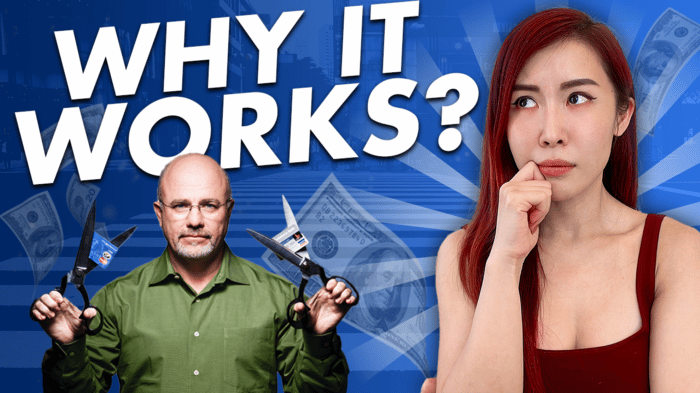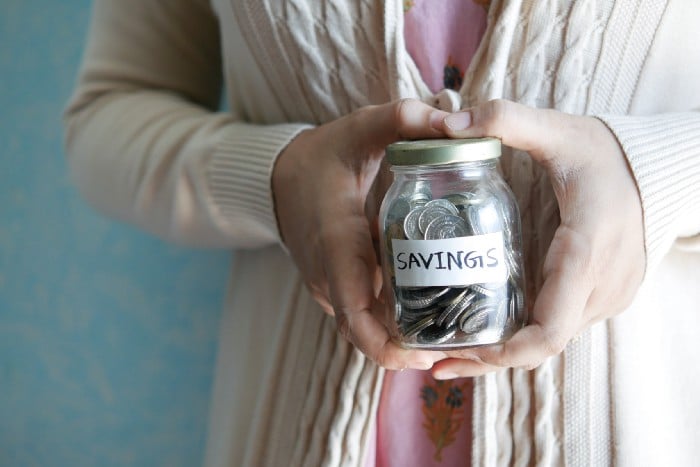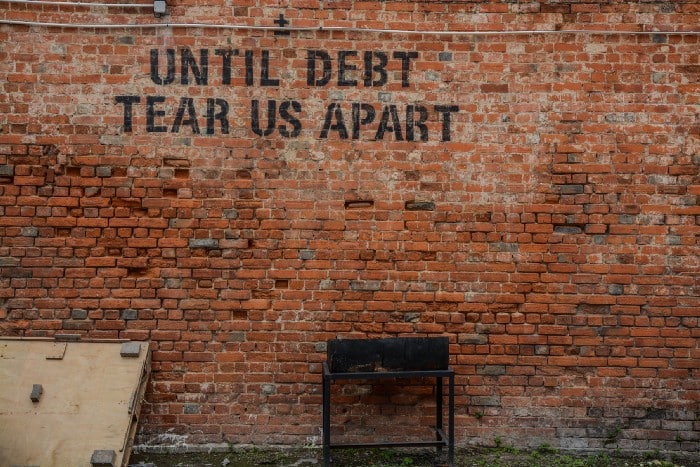Disclaimer:
I am not your financial advisor (yet). Do not take anything on this page as financial advice, EVER.
DO YOUR OWN RESEARCH!
Consult a professional investment advisor before making any investment decisions!
My articles/videos are only for sharing my opinions and educational purposes 😉
In some of my earlier videos, I have talked about how I pull myself out of my consumer debt. (cry cry)
It was a difficult journey and the most difficult part was feeling like my life was a lie during that time.
You know, when everyone around you thinks you have a good life but you know you actually don’t and you have a negative net worth.
Dave Ramsey, who is definitely a leader in the American personal finance space, has kept me motivated during my journey of redefining my financial self.
Dave Ramsey focuses on teaching people how to budget, beat debt, save and invest.
But today it is not too much about Dave Ramsey, but about his signature money management technique — The 7 Baby Steps, which are meant to help you get out of debt, save money, and build wealth.
In other words, it’s the blueprint to financial success.
With that in mind, let me tell you exactly why Dave Ramsey’s 7 Baby Steps work based on my own experience.

First off, The 7 Baby Steps are not packaged as one program.
Rather, under each step, you can find a particular product that is sold or referred by Dave Ramsey.
That can be an app, a course, a book, etc.
It means I am not selling you to join his program, although you are definitely welcome to explore the products he is selling.
I am asking you to take good references with these 7 simple steps because they will be your first step to regaining your financial power without feeling overwhelmed.
Baby Step 1: Save $1,000 For Your Starter Emergency Fund

Most of us know the goal is to have a 3–6 month emergency fund, but that can be overwhelming if you are just starting out.
So Dave Ramsey says that the first thing you should do is set up a $1,000 emergency fund.
Why?
The reason is simple — somewhere along your journey, life will happen, and you will be slapped with out-of-the-blue expenses like car repairs, medical bills, and home repairs, just to mention a few.
And when that happens, and you do not have your emergency fund, you will have to use your credit card or, worse still, get yourself in a difficult situation where you actually cannot pay.
I learned about Dave Ramsey’s baby steps years ago and I started with saving that $1000.
Later on, I followed the 50/30/20 budget rule and I started saving 20% of my paycheck, which is more than $1000 (not gonna tell you my income :)).
I learn one thing during the process —
The key to success is really about building momentum and not stopping.
It can feel uncomfortable at the beginning to cut down on your expenses, but once you win those mental battles, you will start to see it as a game and enjoy saving money.
In fact, look at any goals of yours as a game you choose to play, rather than a chore you need to do.
You will enjoy the process so much more and find success so much easier.
Baby Step 2: Pay Off All Debt (Except Your Mortgage) Using the Debt Snowball Method

Debt here counts as your credit card bills, bank loans, student loans, and even the money you owe friends or family.
Dave Ramsy recommends an effective way of paying your debt called the debt snowball method.
It involves creating a list of all your debts, except for your mortgage if you have a house.
After that, list your debts from smallest to largest, regardless of interest rate, and start paying the smallest at first.
Once that one is knocked off the list, move on to the next smallest debt and work your way up to the largest one.
Now, there is another debt repayment method called the debt avalanche method, which is about first repaying the debt with the highest interest rate.
The truth is, personally, I am more of an advocate of this method, but I understand where Dave Ramsey is coming from.
Again, it’s all about building that momentum.
The snowball method motivates you to kill one debt after another, something that the avalanche method may not be able to achieve if the debt you have with the highest interest rate is a huge amount.
Of course, everyone’s situation is different but if you are just starting out, I would suggest you follow the snowball method.
Also, a note here, whether you decide to pay off your debt or not is a personal decision.
To get more insight on the topic, read my article: Should You Invest or Pay Off Debt?
Baby Step 3: Save 3 to 6 Months of Living Expenses for Emergencies
Here we go, Dave Ramsey’s third baby step is to save 3 to 6 months of living expenses, like what we have talked about earlier.
And if you have been a good girl or good boy, it should not be hard at this point because you have already started saving that $1,000 per month.
Now, when it comes to saving my emergency fund, I don’t just put that money in the banks, which gives me peanuts in interest. (cry cry)
Instead, I use that money to buy stable coins like USDT and USDC, and then I stake them on crypto platforms like Nexo, which earns me a 10% APR (annual percentage rate) per year.
I mean, when can you find that interest rate nowadays?
Why did I choose to stake my emergency fund?
You may say that an emergency fund is supposed to be liquid and easily convertible to cash, and you are absolutely right.
But do you know that staking allows you to achieve a high level of liquidity too?
Of course, that will mean you need to have a crypto exchange account, like Coinbase, Binance, Gemini, or Kraken, that can convert your money back to cash.
If this sounds too difficult for you, consider saving your emergency fund in debt equities issued by governments, financial institutions, or corporations that are easily tradable on the stock exchanges.
This way, you can easily sell them when you need the money (most likely without any loss) and you can earn higher interest than the banks if you just keep your investment there.
Baby Step 4: Save for Retirement

According to the 2019 statistics, Americans with a high school degree have an average retirement savings account value of $20,000, while those with a college degree have an average account value of $119,000.
I mean, even with that $120k, I think I can live for at most 2–3 years? (probably less…)
Given the June inflation rate of 9.1% in the States, I definitely feel the anxiety of my American friends.
And high inflation is not just an American thing but rather global, and that’s why it is more important than ever to follow Dave Ramsey’s fourth baby step, which is to save for retirement.
Specifically, he advises that you invest at least 15% of your gross income for retirement monthly.
Given my fear of not being able to retire, I have definitely saved more than that.
Baby Step 5: Save for Your Children’s College Fund
If you plan to have kids or put someone through college in the future, you will have to follow through with Dave Ramsey’s fifth baby step.
He suggests using the 529 college savings plan or education savings account (ESA) to save for your kids’ college education. (things in the States I know…but I am sure you can find an equivalent where you live)
And why would you do that?
Well, by paying for your child’s or children’s college tuition, you give them financial security because they won’t have to take on student loans and get into debt.
For those who do not know they want to have kids, save that money instead for your other long-term goals and dreams, for example, that business you have been wanting to start and that travel plan you have been wanting to have.
Baby Step 6: Pay Off Your House
Dave Ramsey’s sixth baby step is to direct any extra monthly income into your mortgage so that you can pay it off early.
Because by reducing your liabilities (i.e., your mortgage), you will increase your net worth.
Baby Step 7: Build Wealth and Give

The final baby step is to keep growing your wealth and giving back to others.
You could leave an inheritance to your kids or others.
You can also offer financial support to nonprofits close to your heart or people in need.
I love this final step — It reminds me that building wealth is never a selfish journey but one that can benefit humankind.
My suggestion is, if his strategy doesn’t resonate with you, it’s fine because this is YOUR financial journey.
However, read his stuff or listen to his podcast.
I am inspired by his energy and I like how he reminds me that, this is my life and not others, and I would be stupid if I used my money to impress others instead of myself.
Now, being your best financial life doesn’t mean you need to sacrifice all the good things in life.
You can still live life luxuriously. How? Read my article on the topic.
Btw, I am launching my own NFT collection called Rich Goddess, which you may want to check out. 😉
Also, if you want to learn more about how to reclaim your financial power, be sure to check out my page / YouTube channel.

Recent Comments